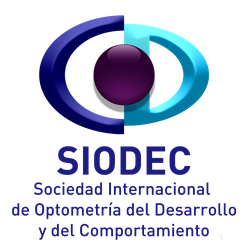
Elisa Aribau and Jordi Catalán, two leading figures in the field of developmental optometry, share in this interview the foundations of their upcoming joint presentation at the IX Congress of SIODERV. From a clinical and deeply human perspective, both address the importance of understanding laterality as a key brain function, with a direct impact on children's learning and the effectiveness of Vision Therapy programs. A dialogue filled with experience, science, and commitment to improving professional practice.
Elisa: Where did the idea for this presentation come from?
Well, the truth came out of a conversation with Dr. Catalán, about documenting our work of more than 40 years and updating a lateralization test, known as the Harris test, which is still used and dates back to 1957..
For an optometrist, what is the added value of understanding optometric laterality in the learning process?
I believe it is essential to take into account the treatment of laterality in our vision therapy programs, its neurological basis, and its implications for improvements in children with developmental and learning problems. This perfectly complements our overall vision of what vision is, which also includes the correct or incorrect organization of laterality.
"I learned that there was a relationship between vision and laterality, based on one of the basic ideas of our work, which goes beyond the eyes: vision is in the brain."
What inspired your interest in studying the relationship between laterality, vision, and learning?
It was a process, analyzing cases that came to our consultation and especially through my collaboration with the APALCE Foundation, which dealt with cases of cerebral palsy, and whose American neurorehabilitators addressed many issues related to laterality. It was my colleague Manel Roure who introduced me to this Foundation. Later on, I met specialists in child development, such as the doctors from the Medical Institute of Child Development, Jordi Catalán, Jorge Ferre, Víctor Casaprima, and Josep Mombiela.
With all of this, through gaining experience, I learned that there is a relationship between vision and laterality, based on one of the basic ideas of our work, which goes beyond the eyes: vision is in the brain. Laterality is also in the brain. Our therapies primarily work on the brain.
During your presentation, will you address specific visual therapy techniques that help improve the integration of laterality and vision?
We will address diagnosis and therapy, but the most important thing is to clarify the concept of laterality, which is a brain function just like vision. The eye and the hand are merely two peripherals that capture information that our brain processes.
How do you expect your presentation to help other professionals in their daily practice?
I trust that it will help broaden their perspective on their work and assist them in achieving better results in their therapies.
What does SIODERV mean to you?
A dream come true, achieved with the effort of many colleagues over the years so that today Optometry in Spain is at the level it is. And there is still much work to be done. And SIODERV must be a key piece to maintain this path. For my part, I can only say thank you.
Jordi: What is the importance of knowledge about child neurodevelopment and its relationship with laterality and vision for the optometrist who may attend your presentation?
The knowledge of laterality and all its influences on child development is essential for the optometrist who works with children with learning problems. The optometrist has always been a key figure in the treatment of issues that interfere with learning.
We all know the importance of having good visual functionality, both in the motor and sensory aspects; laterality organizes all the functions of the brain. It is very common to find laterality disorders in children with learning problems.
"Lateralization organizes all the functions of the brain."
How can the understanding of laterality influence early intervention strategies for children with learning challenges?
Lateralization is a fundamental stage in a child's development. In the pre-lateral stage, the foundations for future learning are structured. Preventive work is essential, focusing on the correct integration of primitive reflexes and the proper practice of contralateral movements, so that the visual system can integrate the information it will perceive throughout the school life.
And how can it help parents and educators support the educational development of children?
The participation of parents and educators is necessary; their involvement is essential for achieving success. However, it should be the health professionals who provide the knowledge that parents and educators request to optimize the development of their children or students.
Given your focus on child neurodevelopment, how do you think participation in an organization like SIODERV can enrich research and clinical practice?
It is very important to hold conferences and training courses so that professionals can learn about the latest contributions from researchers and professionals with proven practice.
The very preparation of the presentations and training sessions creates the need to organize the latest professional experiences in order to communicate and offer them to other professionals who wish to improve their own training and apply them immediately to their patients.
